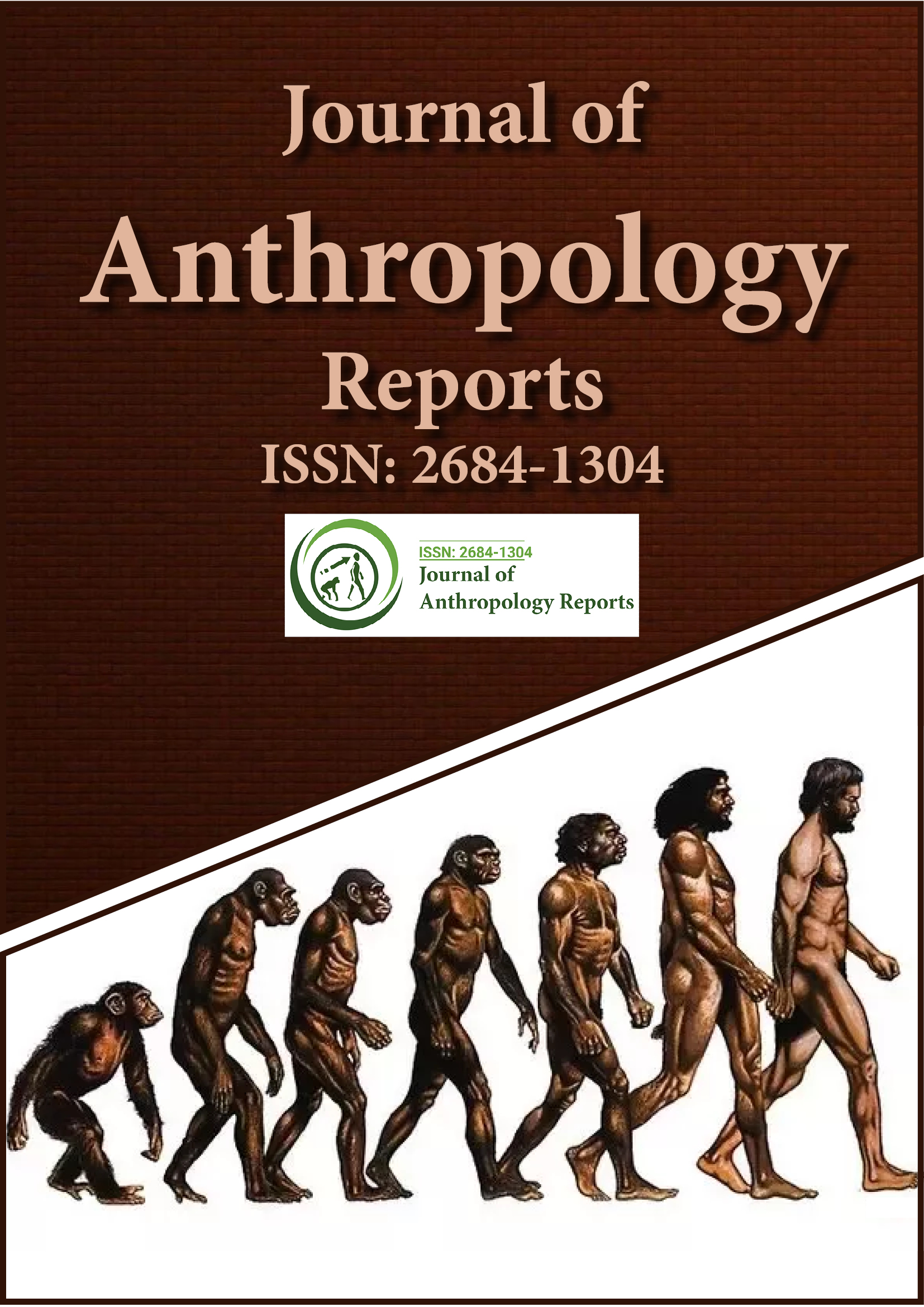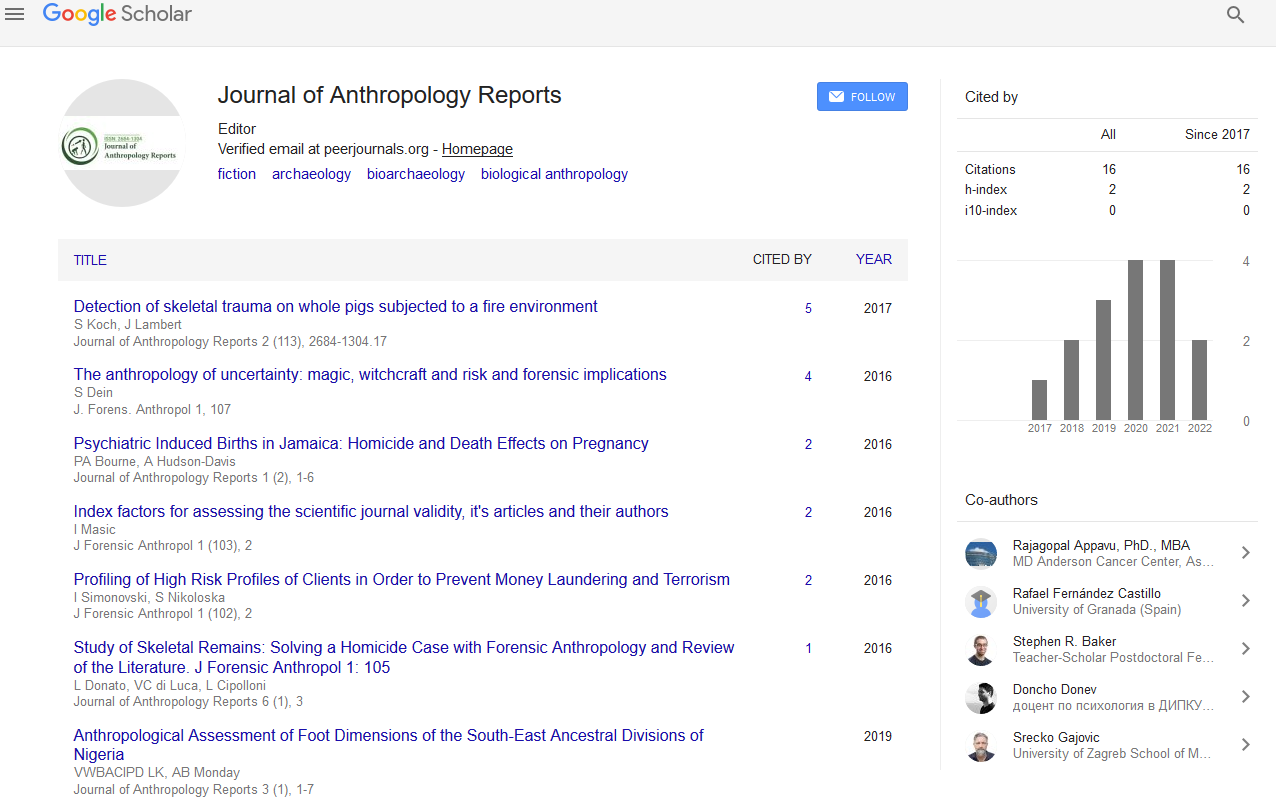Indexed In
- RefSeek
- Hamdard University
- EBSCO A-Z
Useful Links
Share This Page
Journal Flyer

Open Access Journals
- Agri and Aquaculture
- Biochemistry
- Bioinformatics & Systems Biology
- Business & Management
- Chemistry
- Clinical Sciences
- Engineering
- Food & Nutrition
- General Science
- Genetics & Molecular Biology
- Immunology & Microbiology
- Medical Sciences
- Neuroscience & Psychology
- Nursing & Health Care
- Pharmaceutical Sciences
Perspective - (2023) Volume 6, Issue 1
Various Theories on Natural Selection in the Evolution of Living Organisms
Mubarak Bidmos*Received: 01-Mar-2023, Manuscript No. JFA-23-19685; Editor assigned: 03-Mar-2023, Pre QC No. JFA-23-19685 (PQ); Reviewed: 20-Mar-2023, QC No. JFA-23-19685 (QC); Revised: 27-Mar-2023, Manuscript No. JFA-23-19685 (R); Published: 04-Apr-2023, DOI: 10.35248/2684-1304.23.6.151
Description
Natural selection, the process of adapting an organism to its environment by selectively reproducing changes in the organism's genotype or genetic makeup. In natural selection, variations in genotypes (the entire complex of genes inherited from both parents) that make an organism more likely to survive and reproduce are conserved from generation to generation at the expense of less favorable variations be augmented. Evolution often happens as a result of this process. Natural selection can result from differences in survival rates, fecundity, developmental rates, mating success, or other aspects of the life cycle. All of these differences lead to natural selection to the extent that it affects the number of offspring an organism leaves. Natural selection is the basis for all evolutionary applications in biology and the study of cultural processes in archaeology. Natural selection is important because it provides us with tools to speak not only of the diversity of biological systems, but also of material culture, a by-product of human decision-making. This article provides a baseline for the application of the concept and description of natural selection in evolutionary archaeology.
In Charles Darwin's theory of natural history, selection is the primary mechanism involved in the evolution of life on Earth. Three conditions must be met for natural selection to occur in an ecosystem. First, organisms populating the system must exhibit phenotypic variations that affect survival. Second, these variations must be inherited. Third, the environment must limit population growth in the ecosystem by providing limited food resources. Natural selection occurs between organisms when all three conditions are met. They then have to compete with each other for scarce resources. The better an organism adapts to its environment, the more resources it will acquire and the more likely it will ultimately leave more offspring than its competitors. Survival of adult offsprings of an organism is based on the fitness of an organism and it is called as the survival of Fittest. Some genes are only present in a few organisms, or even disappear entirely, because the more fit an organism is, the higher the relative frequency of that gene in the population's gene pool and was not a mystical striving for perfection inherent in living nature (e.g., as envisioned by Jean-Baptiste de Lamarck's famous pre-Darwinian theory of evolution).
The conclusion of Darwin's hypothesis of natural selection summarizes four sets of empirical data. The first set includes extensive experience in artificially selecting parents for breeding plants and animals intended to exhibit desirable traits.
The second set contains facts about the variability of organisms of the same species. If inherited, such mutations provide material upon which natural selection can act. The third set contains data on ecological constraints that force organisms to struggle to survive. A fourth set consists of empirical data on reproduction and genetics, with variations passed down from generation to generation related to the fitness of different organisms.
Darwinian biologists knew the laws of mutation, heredity, and ecological dynamics, and had sufficient data on today's biodiversity that the main mechanisms by which evolved life on Earth developed were It should be possible to conclude that it was natural selection. Darwin himself did not know these laws - especially the laws of genetics. In principle, however, the natural selection hypothesis is an a priori conclusion from the premises discovered through analysis of the above datasets. So there is no need to postulate the principle of natural selection as a kind of unprovable axiom of biology. Such a principle would be wrong to do so, since it limits natural selection to the existence of a particular class called "organisms". Today, the mechanism of natural selection can be described as the action of general laws of nature acting on systems composed of self-replicating and changing elements under the constraints of growth (Manfred Eigen). Darwinian natural selection is therefore just one example of this more general selection process. With organisms as selfreplicating elements, genetic differences as variation, and the environment as a set of constraints on the growth of the system.
Citation: Bidmos M (2023) Various Theories on Natural Selection in the Evolution of Living Organisms. J Anthropol Rep. 6:146.
Copyright: © 2023 Bidmos M. This is an open-access article distributed under the terms of the Creative Commons Attribution License, which permits unrestricted use, distribution, and reproduction in any medium, provided the original author and source are credited.

